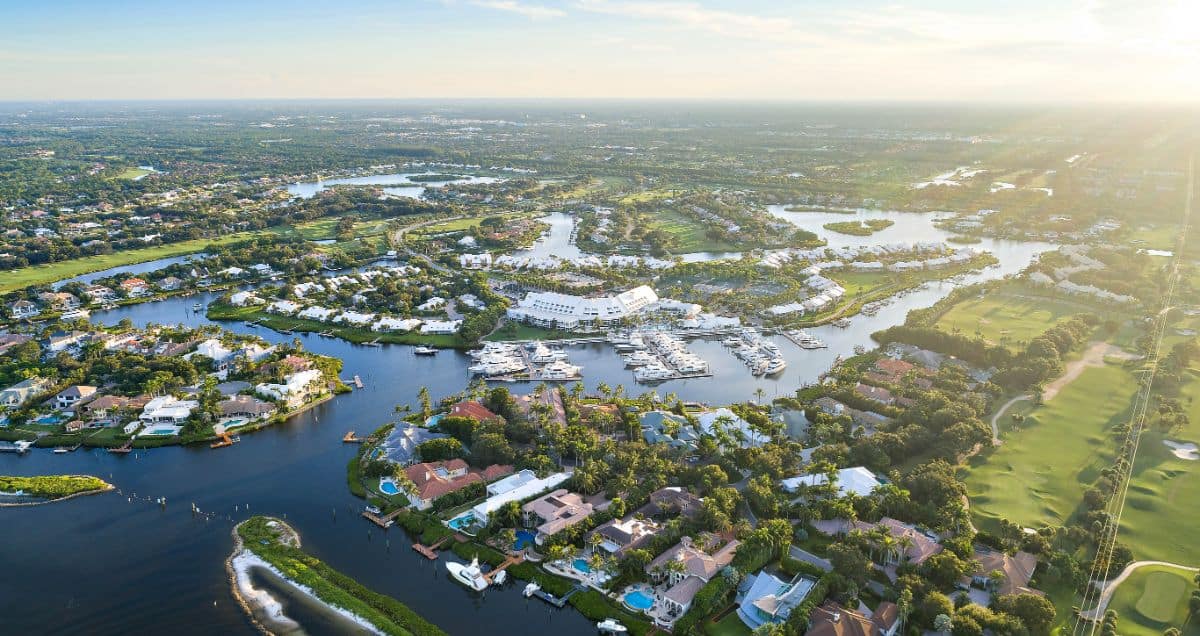Waterfront properties are among the most sought-after real estate listings due to their natural beauty, investment potential, and desirable locations. Whether it’s an oceanfront villa, lakeside cabin, or riverfront estate, these properties hold unique appeal for various types of buyers, from vacation home seekers to investors in high-end real estate. However, listing these properties effectively requires specialized knowledge, attention to detail, and the use of advanced MLS (Multiple Listing Service) filters to ensure the listing attracts the right audience.
This article explores the best practices for listing waterfront properties, the importance of advanced MLS filters, and how to make these listings stand out in a competitive market.
Why Waterfront Properties Are Unique

Waterfront properties differ from standard real estate listings in several important ways. These properties often have specific features and benefits that need to be highlighted for potential buyers, and their value is influenced by unique factors such as proximity to water, views, and environmental conditions. For example:
- Scenic Value: The primary selling point of waterfront properties is their stunning views. A property by the water typically offers picturesque views that can dramatically affect the price, making it essential to highlight these views in listings.
- Water Access and Amenities: Access to the water itself is a major factor. Buyers of waterfront properties often want private docks, beaches, or the ability to enjoy water-based activities like boating, fishing, or swimming. This must be detailed in the MLS listing.
- Environmental and Regulatory Considerations: Waterfront properties are usually subject to more rigorous regulations than non-waterfront properties. These can include zoning restrictions, environmental protection laws, flood zone designations, and coastal or riparian rights that need to be communicated clearly to potential buyers.
- Higher Investment Potential: Waterfront properties are often seen as valuable investments because of their limited availability and long-term demand. Buyers often see them as potential vacation homes, rental properties, or even long-term assets to hold.
Key Information for Listing Waterfront Properties
When listing a waterfront property, it’s crucial to include detailed and specific information about the property’s features. Below are the essential elements that should be included in every MLS listing for waterfront properties:
- Waterfront Type
- Specify the type of water feature: ocean, lake, river, pond, or stream. Each type of waterfront offers different appeal and considerations for buyers. Some may want an oceanfront property for the beaches, while others may prefer a peaceful lake or river setting for privacy and relaxation.
- Describe the water’s proximity to the property. Is it directly on the waterfront, or does the property have a short walk to the water’s edge? A clear understanding of the water’s access will help buyers determine if it suits their needs.
- Water Access
- Detail how the property accesses the water. Is there a private dock or boat launch, or is there a public access point nearby? Buyers looking for a property for boating or other water activities need this information clearly outlined.
- Include any amenities related to water access, such as a pier, boat slip, or boat lift. Buyers interested in waterfront properties are often keen on knowing how they can engage with the water easily.
- View and Orientation
- Emphasize the views. If the property offers a stunning sunrise or sunset view, or panoramic vistas of the water, be sure to highlight it. Waterfront buyers value these views highly and they are a key selling point.
- The orientation of the property about the water is also important. For example, a south-facing waterfront property may offer better sunlight, while properties facing a quieter bay or inlet might offer more seclusion.
- Environmental Features
- If the property is located near wetlands, a protected ecosystem, or other environmental areas, it’s essential to highlight these features. These can be seen as positive by environmentally conscious buyers who appreciate access to nature.
- Include information about any flood risks, shoreline erosion, or water-related issues that could impact the land’s use and stability. Waterfront properties are often more vulnerable to these factors than land-based properties.
- Zoning and Flood Zone Information
- Waterfront properties are often subject to specific zoning restrictions that affect what can be built or how the property can be used. For example, there may be restrictions on adding structures close to the water or making changes to the shoreline.
- Flood zone information is another important element that buyers will want to know. If the property is in a flood zone, include the flood zone designation and any flood mitigation measures that are in place or required.
- Land and Lot Features
- Buyers of waterfront properties often look for specific land features, such as beach access, cliff views, wooded areas, or flat terrain that may be ideal for building. Include details about the property’s topography and how the land interacts with the water.
- Whether the land has been developed or is raw/unimproved can be an important detail for buyers looking to make specific improvements.
Using Advanced Filters in MLS to Target Waterfront Property Buyers
MLS systems often come equipped with advanced filters that allow buyers to narrow their search according to specific criteria. For waterfront properties, using these filters effectively can help target the right buyer demographic and increase visibility for your listing. Here are some advanced filters that are particularly useful for waterfront properties:
- Property Type Filter
- Many MLS systems allow agents to specify the type of property—single-family, multi-family, land, commercial, etc. For waterfront listings, specifying whether the listing is a residential home, vacation property, or commercial real estate can help attract the right audience. Buyers looking for vacation homes or primary residences are likely to focus on residential listings, while investors may be more interested in commercial properties.
- Waterfront Feature Filter
- Some MLS systems allow you to filter listings based on specific waterfront features. This includes filters for properties with direct waterfront access, those with a dock, and beach access, or properties with panoramic water views. Using these filters helps ensure that your listing reaches buyers who are particularly interested in water access and amenities.
- Price Range Filter
- Waterfront properties are often higher in value, so it’s important to use price range filters to target buyers with the appropriate budget. Advanced filters can help real estate professionals list properties at competitive price points and ensure that they appear in relevant search results for buyers in the right price range.
- Lot Size and Acreage Filter
- Waterfront properties often come with larger lot sizes, especially in rural or suburban areas. MLS systems usually allow for filters based on the minimum and maximum acreage, so you can target buyers who are looking for larger estates or smaller, more manageable waterfront properties.
- Flood Zone Filter
- Some MLS systems now include flood zone designations as part of their filtering options. Buyers who are concerned about the risk of flooding can use this filter to ensure they only see properties outside of high-risk flood areas. Similarly, sellers can make it clear whether their property is in a flood zone or not, which is important for both pricing and insurance purposes.
- Search by Region or Waterbody
- Many MLS systems allow for filtering by geographic location or the specific type of waterbody (e.g., oceanfront, lakefront, riverfront). For buyers who are interested in properties near specific bodies of water or within certain geographic areas, this filter can help them find their ideal property more quickly.
Best Practices for Marketing Waterfront Properties
- High-Quality Photography and Video
- Waterfront properties often sell based on visual appeal. Investing in professional photography and video tours, including drone shots that highlight the property’s access to water and views, can set your listing apart. A video showcasing the natural beauty of the area, combined with water-based activities, can help convey the property’s lifestyle benefits.
- Social Media and Digital Marketing
- Waterfront properties have significant appeal on social media platforms, especially Instagram and Facebook, where users share and discover beautiful real estate. Use these platforms to share stunning visuals and link back to the MLS listing for wider exposure.
- Feature the Property’s Lifestyle
- Buyers of waterfront properties often buy into a lifestyle as much as a physical space. Make sure to emphasize how the property can enhance the buyer’s quality of life—whether through fishing, boating, relaxing by the water, or enjoying tranquil views.
- Collaborate with Local Tourism and Recreation Services
- Highlight the proximity of the property to local attractions, parks, or recreational facilities. Buyers may be interested in outdoor activities such as boating, hiking, or nature exploration, so showcasing these nearby amenities can help drive interest in the property.
Conclusion
Listing waterfront properties effectively on MLS systems requires more than just good photography; it requires attention to detail, specialized knowledge of the property’s features, and the right marketing strategies. By using advanced MLS filters and emphasizing key features like water access, zoning, views, and environmental conditions, real estate professionals can attract the right buyers who are looking for the unique benefits of waterfront living. Whether for investment, vacation, or a permanent residence, waterfront properties hold enormous appeal, and presenting them well on MLS is crucial for a successful transaction.













